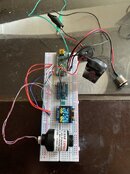Scuba Cobra
Contributor
Hello everybody,
I have my Arduino nano hooked up to my computer, I have the Arduino program application pulled up, and i'm attempting to program it using the source found here DIY Nitrox Analyzer - Eunjae Im
I'm a little confused on the actual steps. I see some comments in the code so I know it's not a copy and paste code, but I don't know what needs to go and what stays. Additionally, I'm unsure of how to add the "additional" Library stuff.
I'm sure its rudimentary to you guys, but i'm slightly lost on that part.
I have my Arduino nano hooked up to my computer, I have the Arduino program application pulled up, and i'm attempting to program it using the source found here DIY Nitrox Analyzer - Eunjae Im
I'm a little confused on the actual steps. I see some comments in the code so I know it's not a copy and paste code, but I don't know what needs to go and what stays. Additionally, I'm unsure of how to add the "additional" Library stuff.
I'm sure its rudimentary to you guys, but i'm slightly lost on that part.




